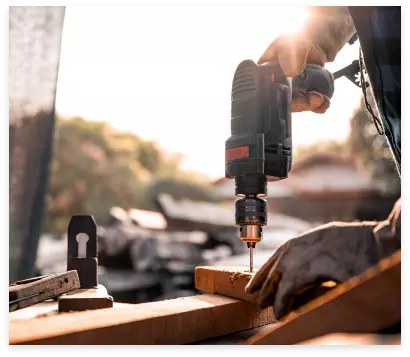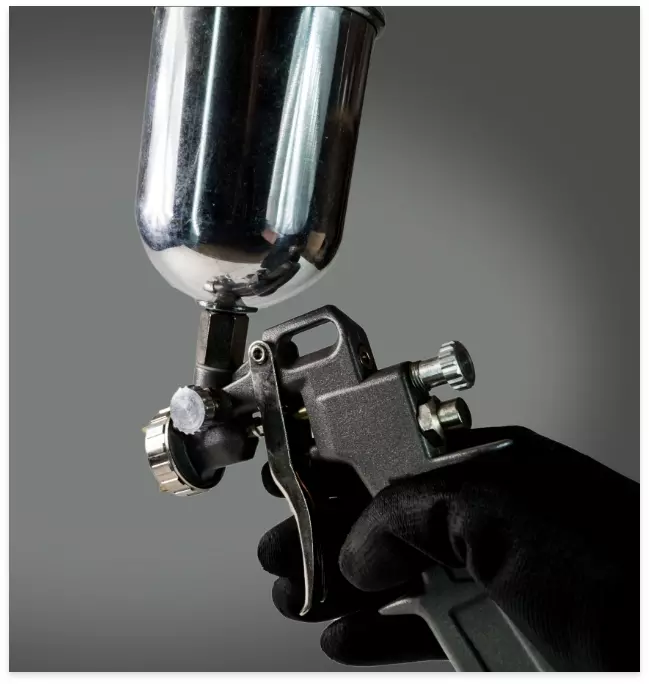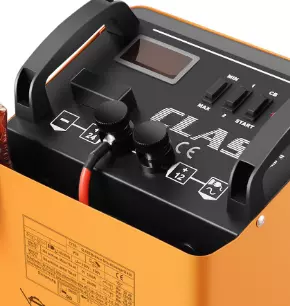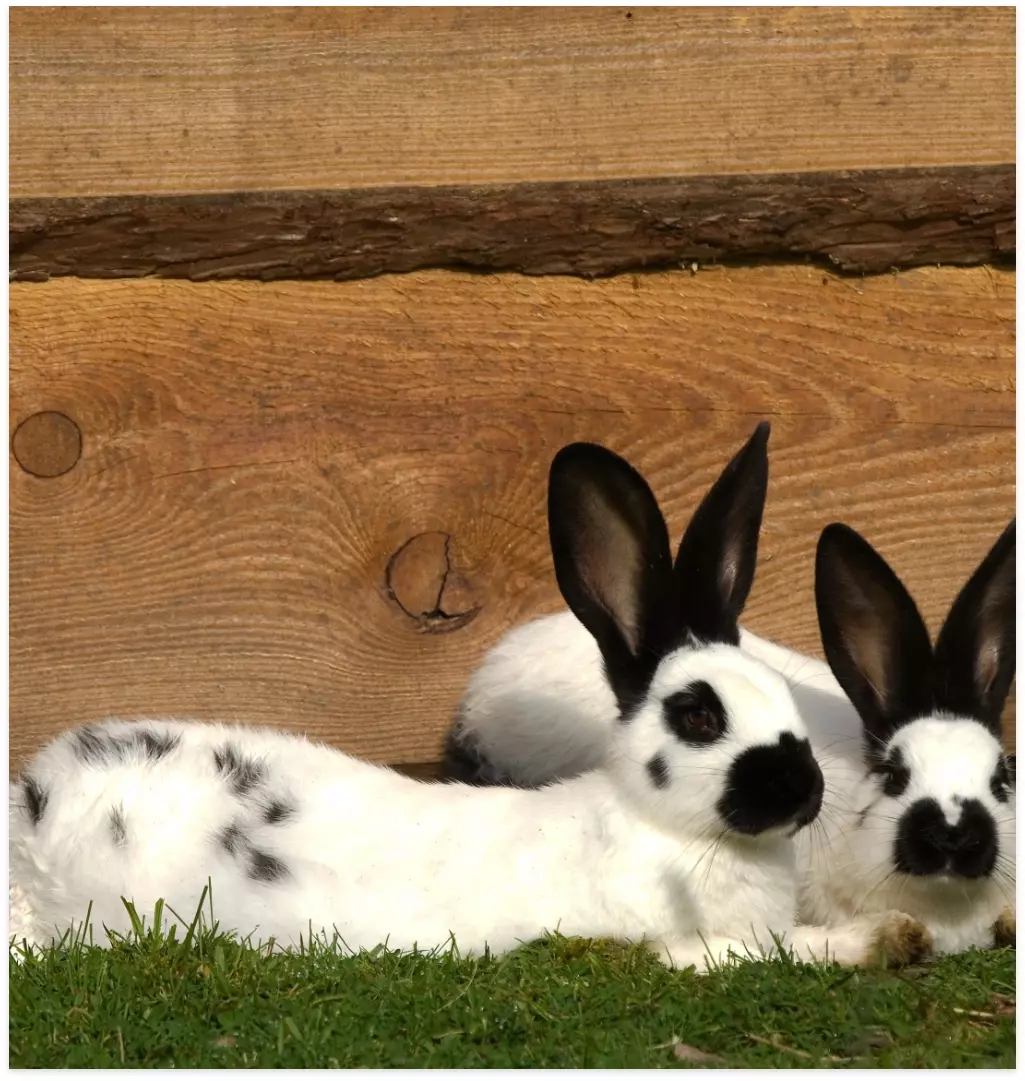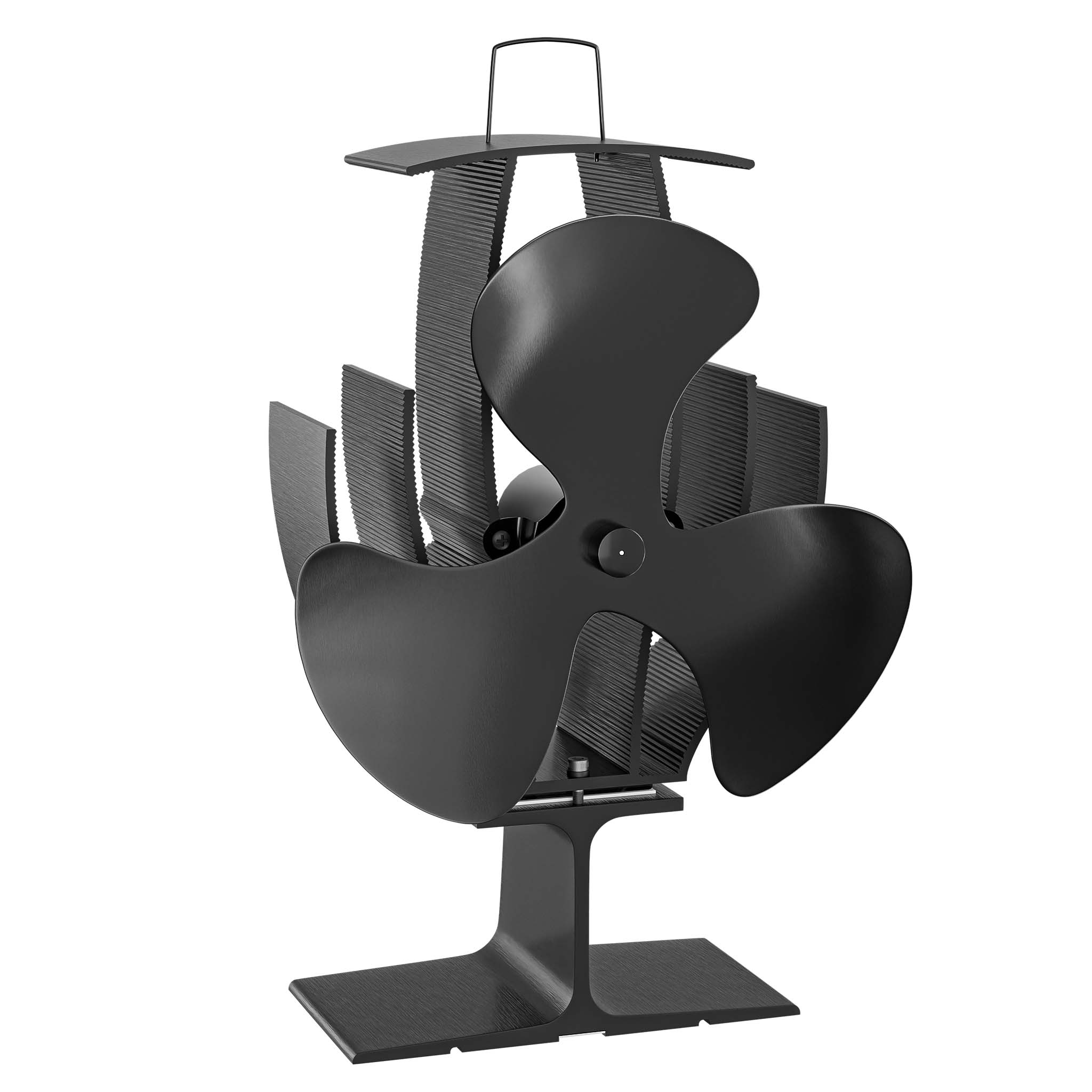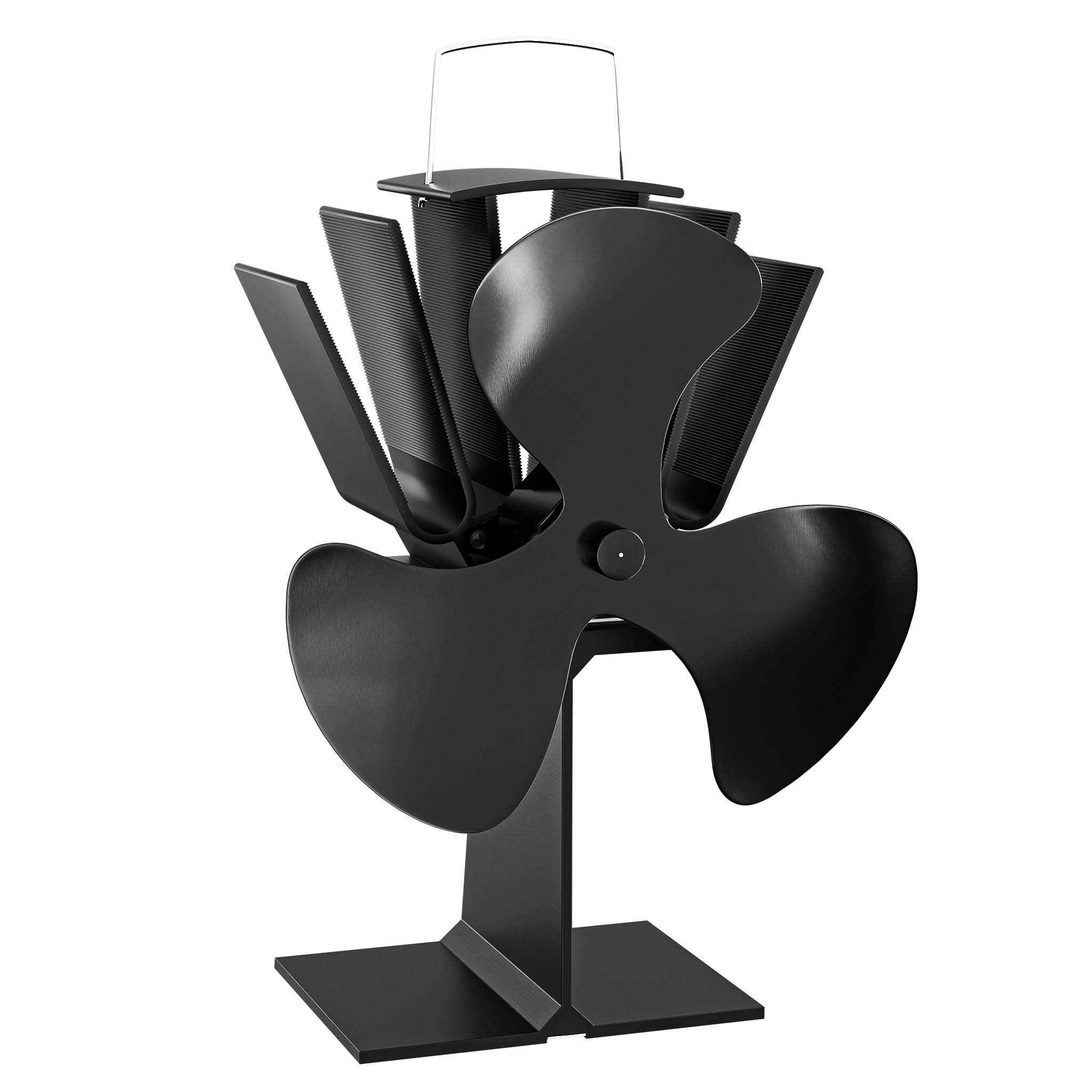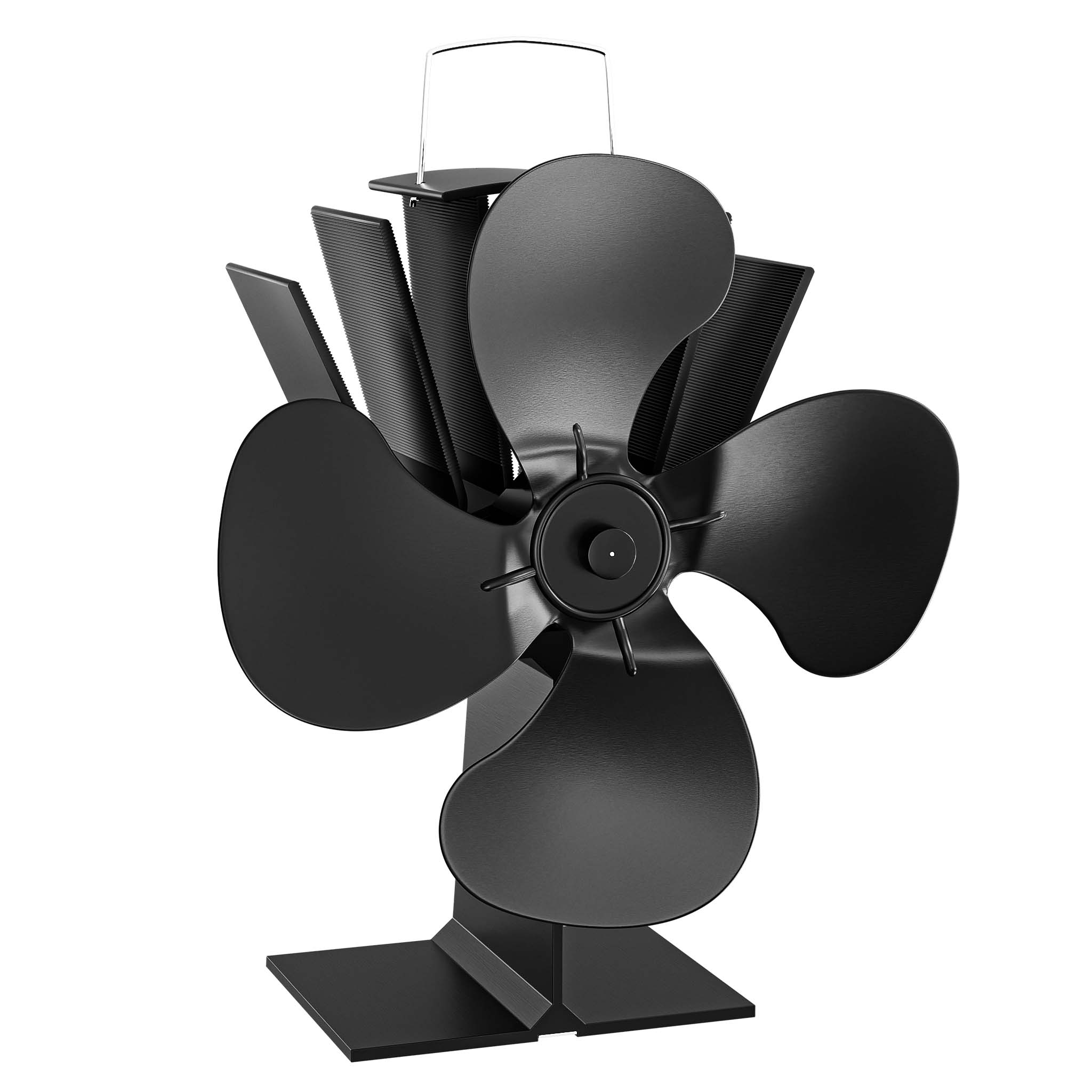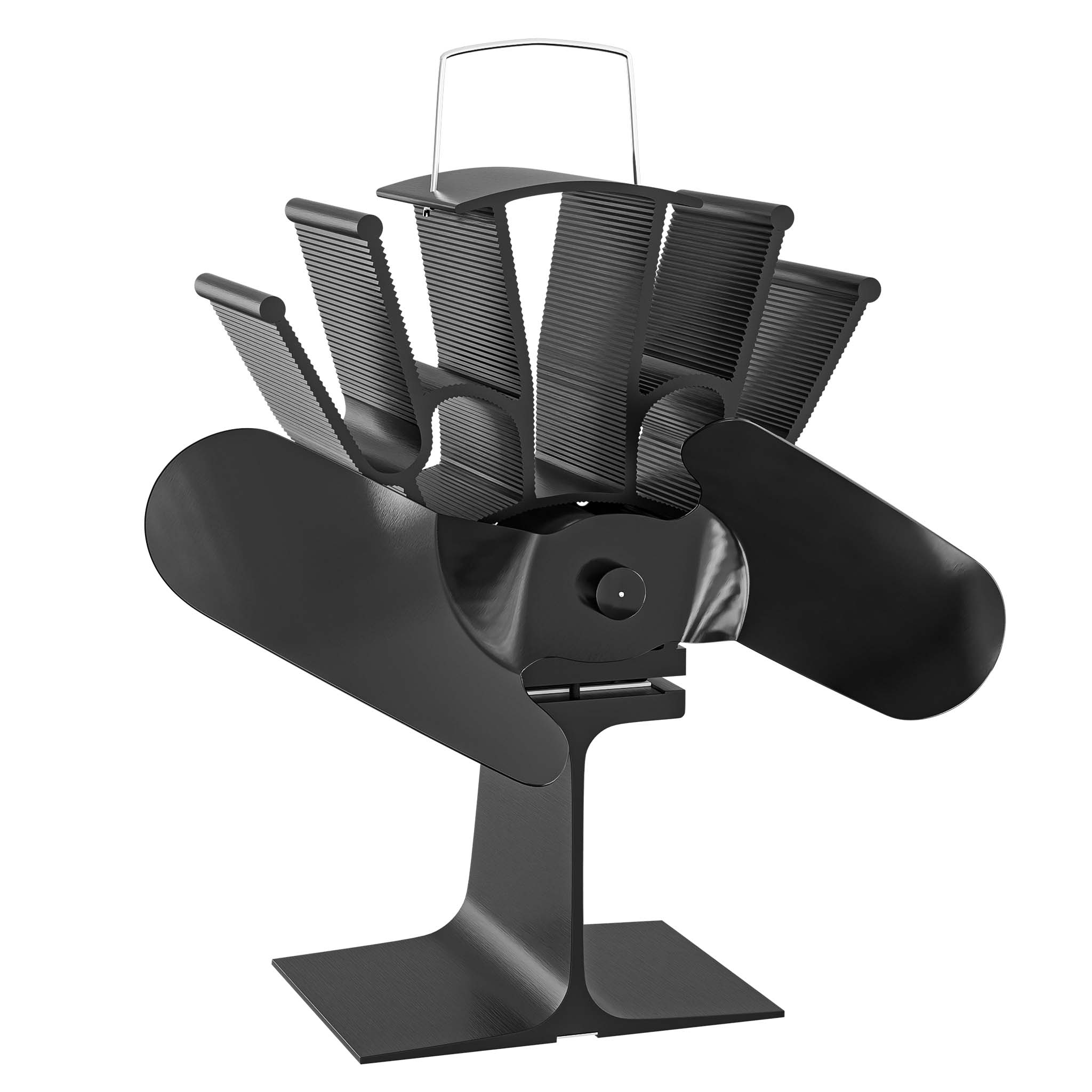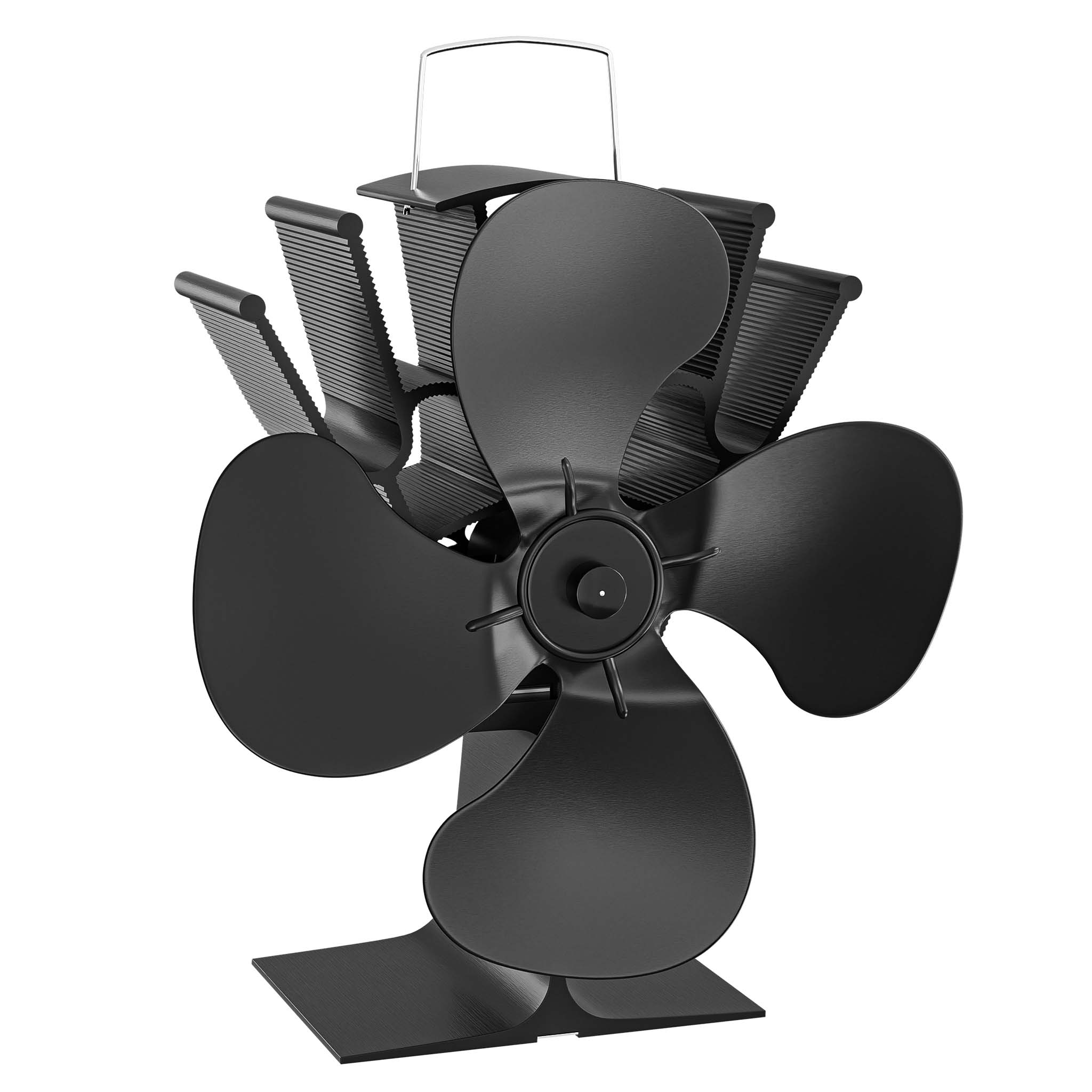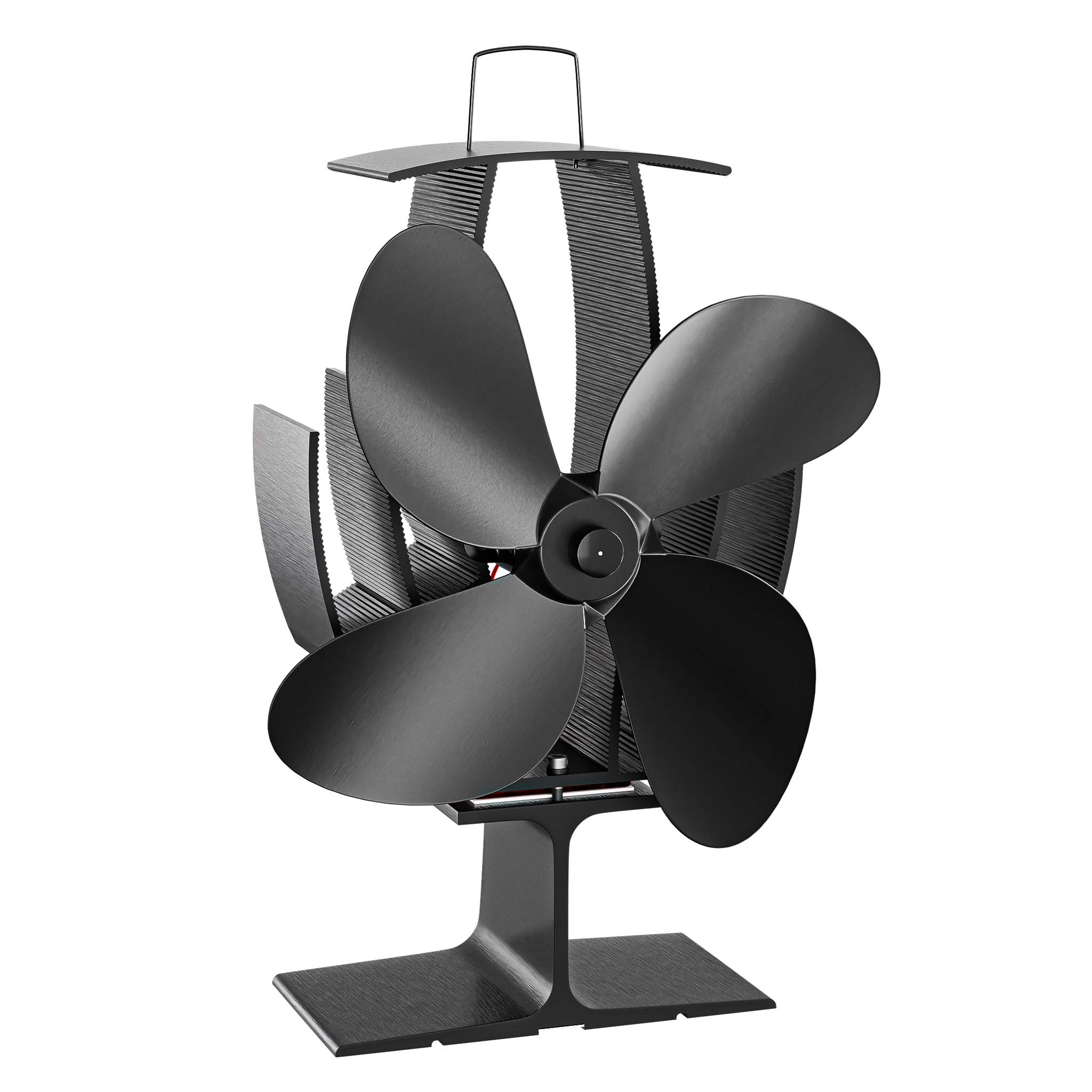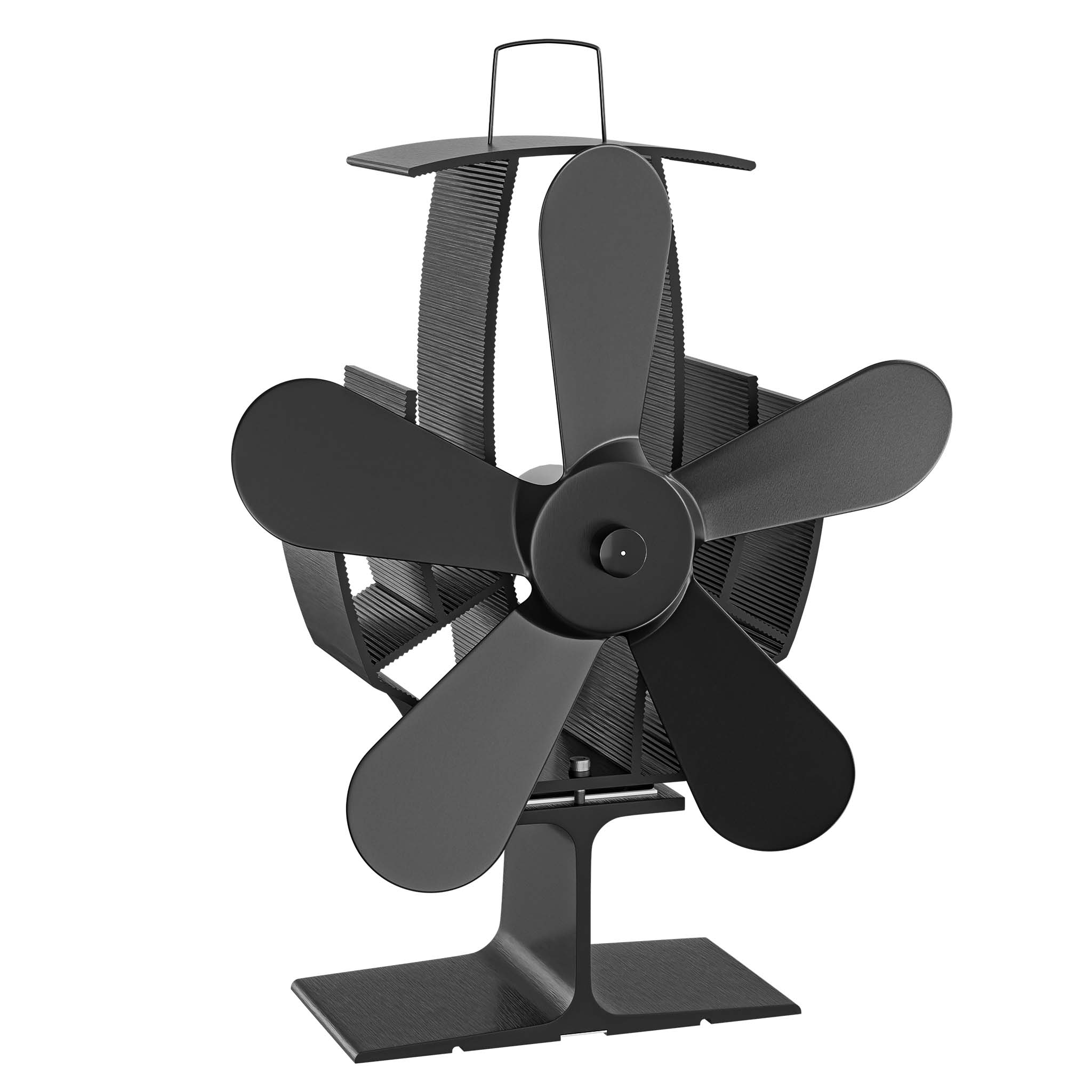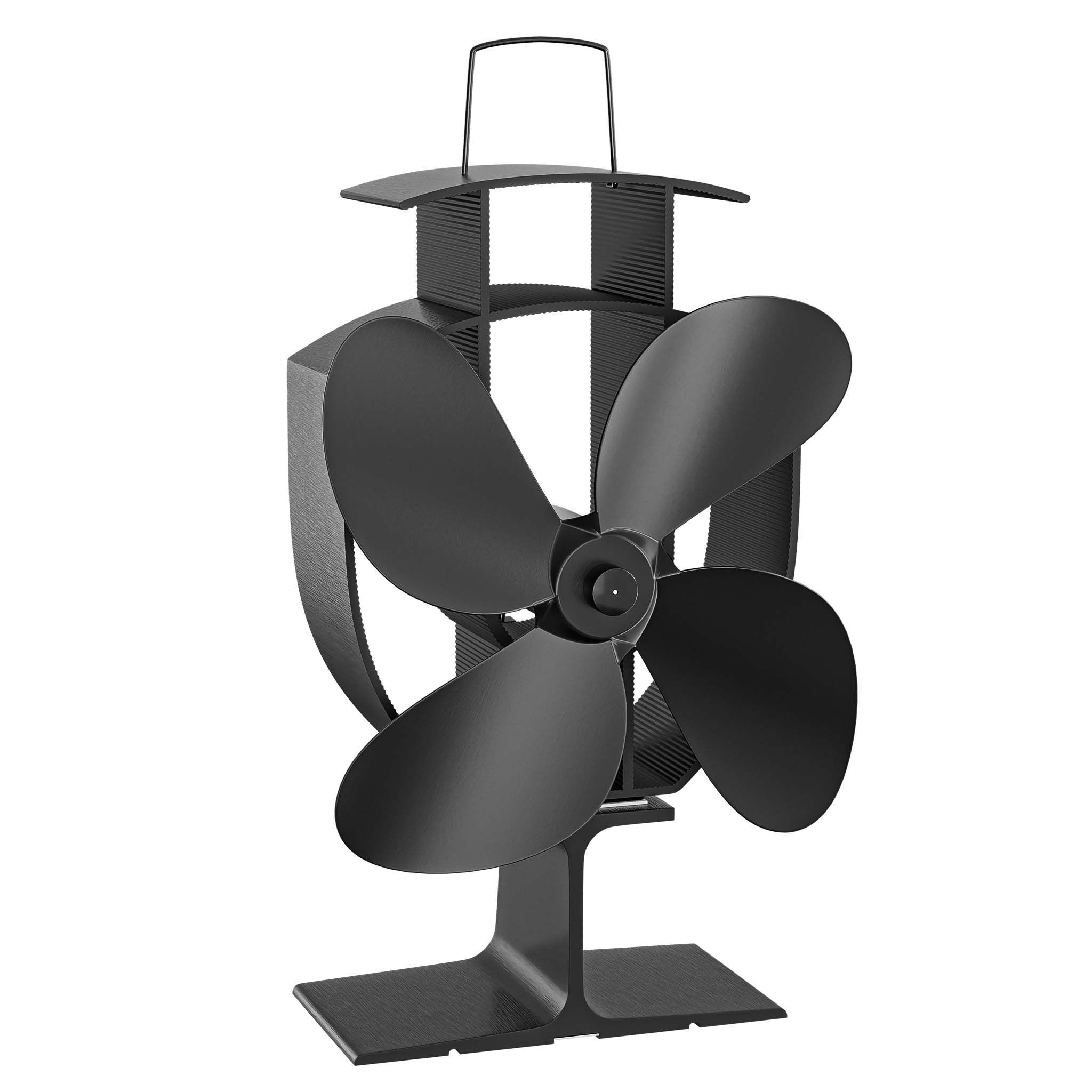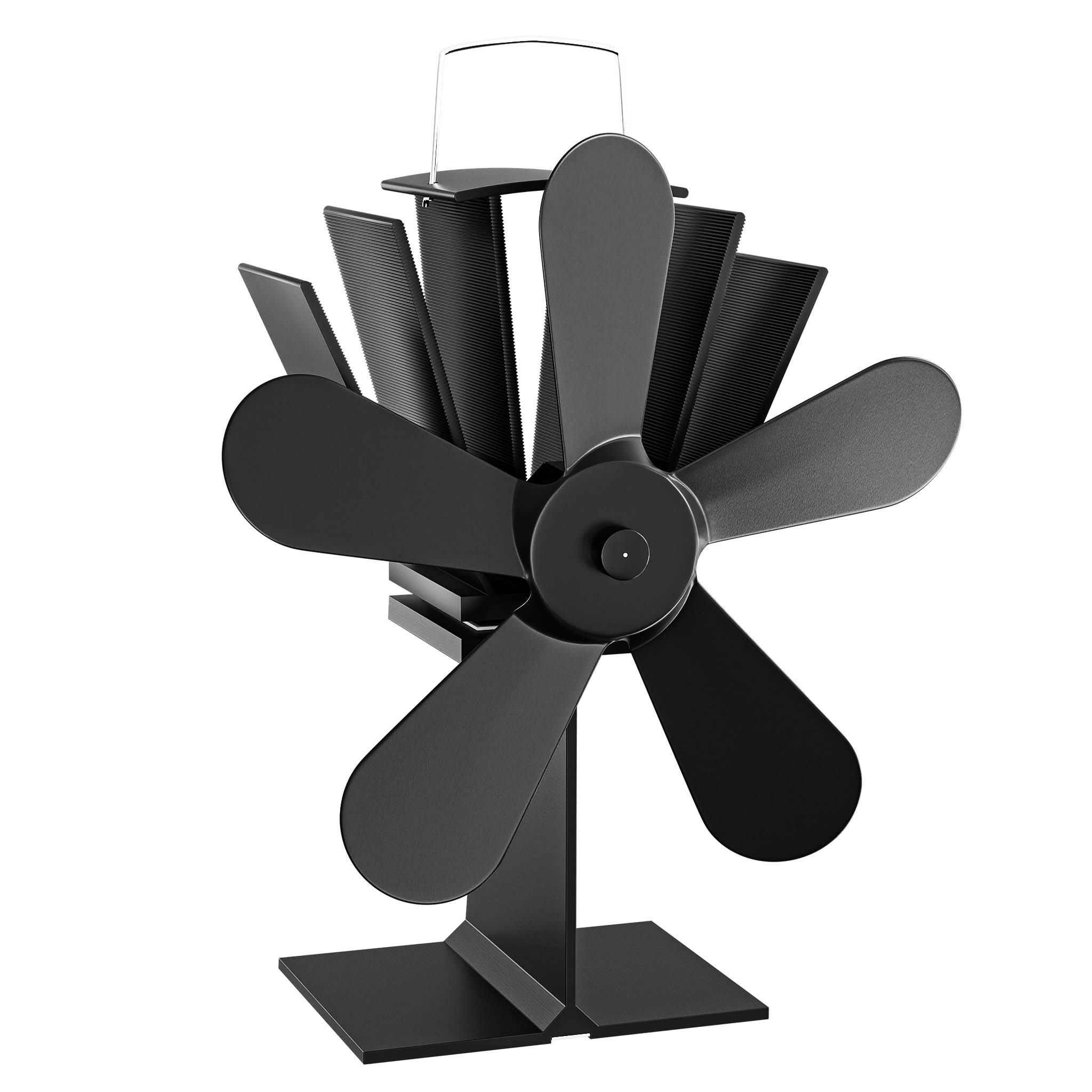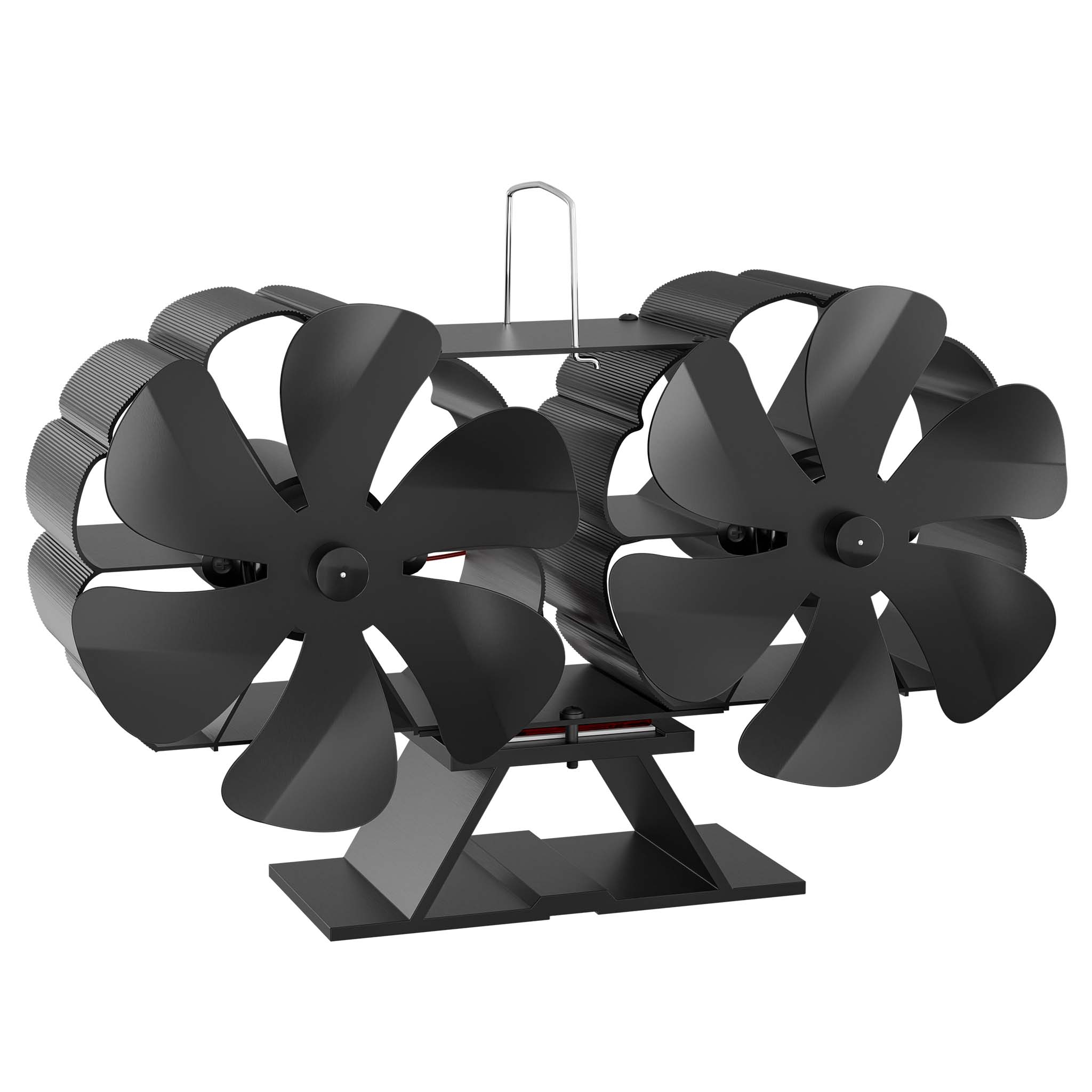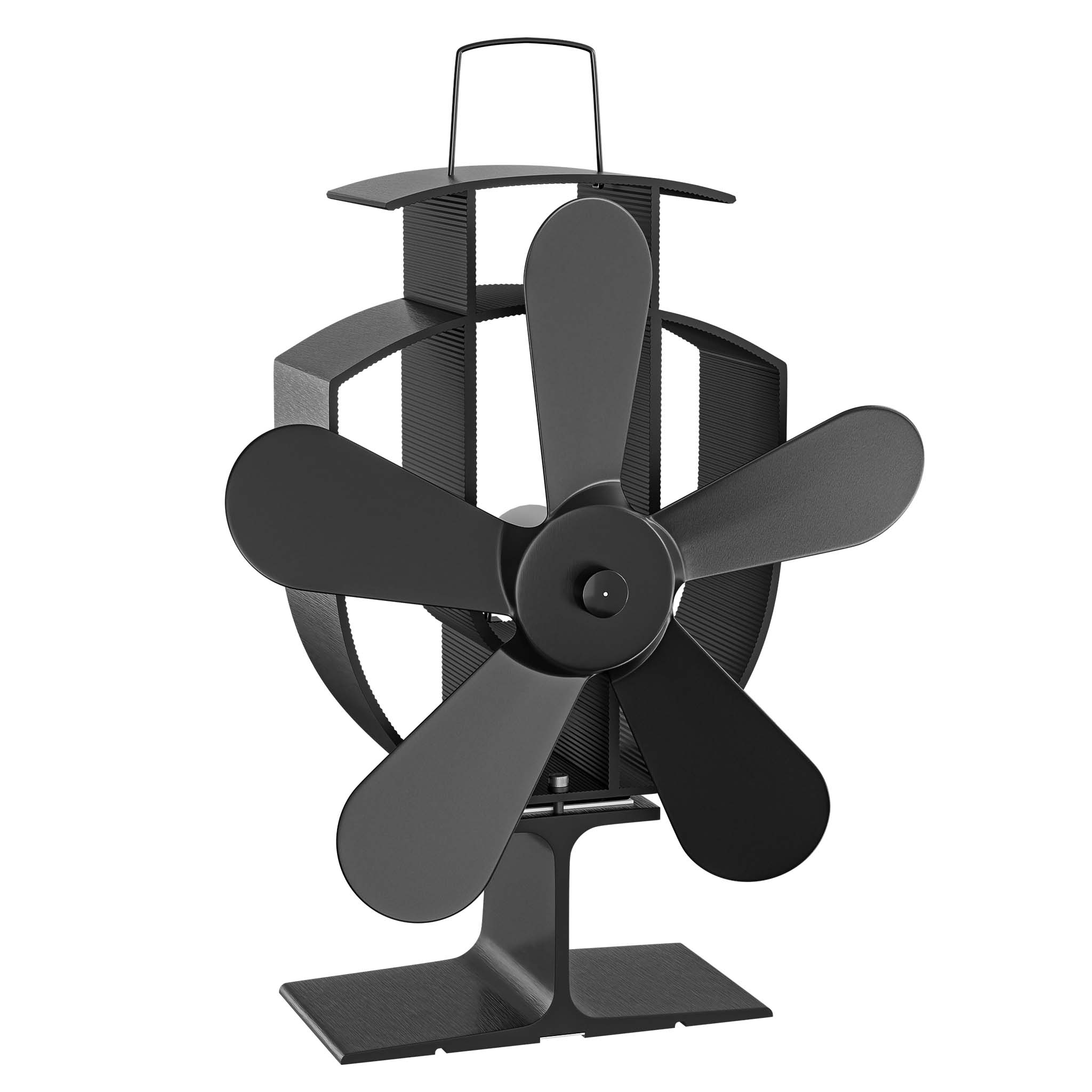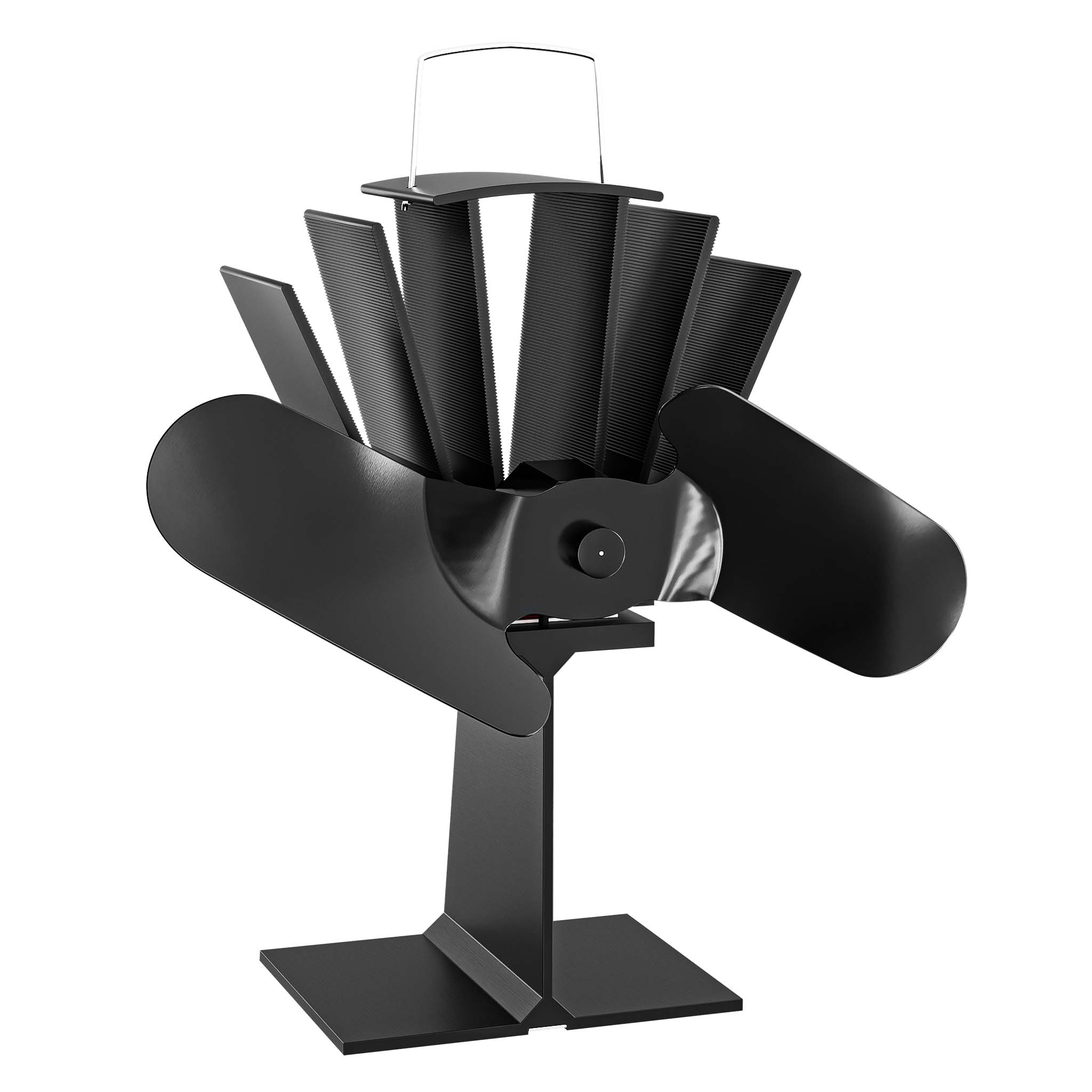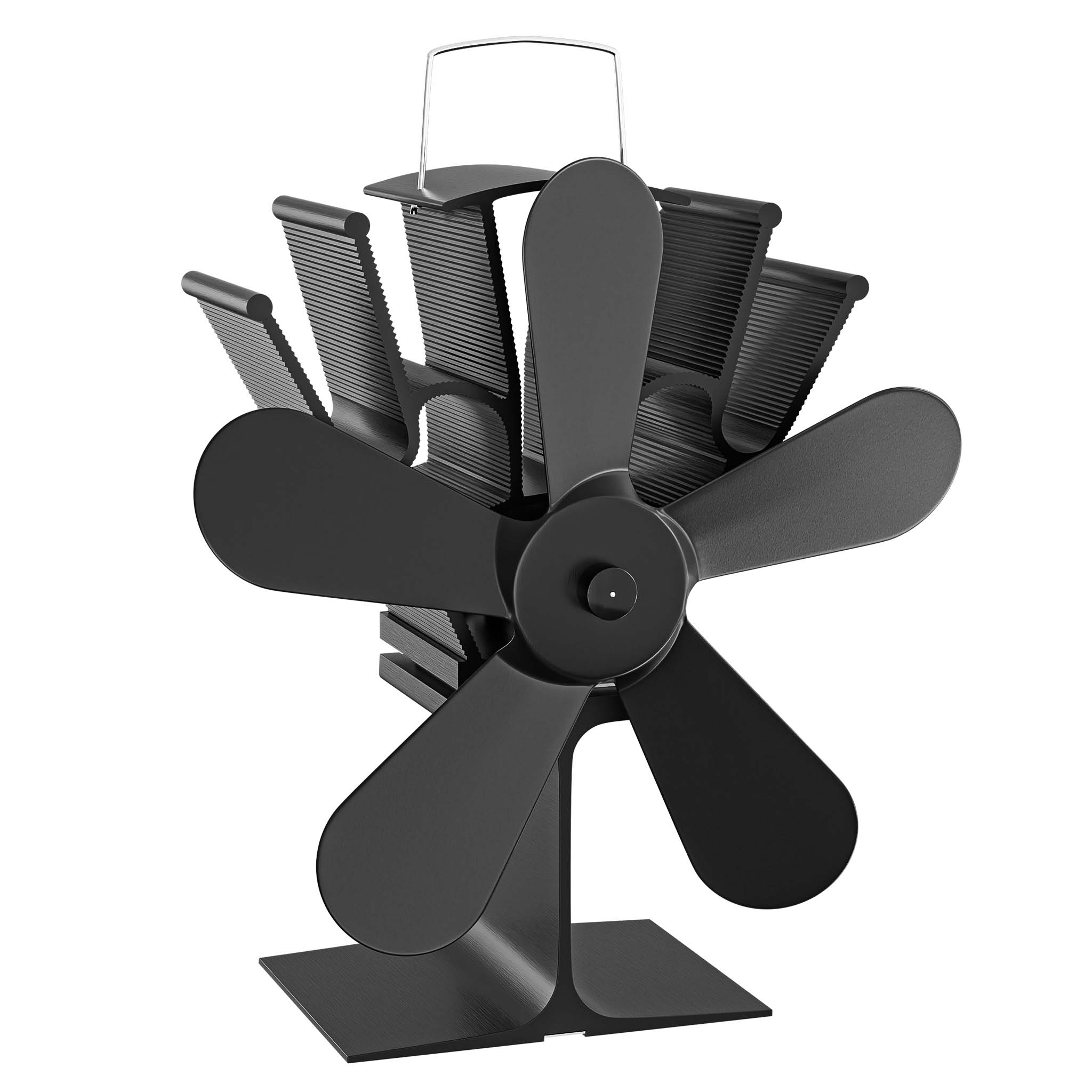Available, delivery time: 2 - 3 days
• Powered by the fire heat – no cord or batteries
• For surface temperatures from 60°C to 350°C
• Better heating with less burning material
• Equipped with 3 heat-resistant blades
Available, delivery time: 2 - 3 days
• Powered by the fire heat – no cord or batteries
• For surface temperatures from 70°C to 350°C
• Better heating with less burning material
• Equipped with 3 heat-resistant blades
Available, delivery time: 2 - 3 days
• Powered by the fire heat – no cord or batteries
• For surface temperatures from 70°C to 350°C
• Better heating with less burning material
• Equipped with 4 heat-resistant blades
Available, delivery time: 2 - 3 days
• Powered by the fire heat – no cord or batteries
• For surface temperatures from 50°C to 300°C
• Better heating with less burning material
• Equipped with 3 heat-resistant blades
Available, delivery time: 2 - 3 days
• Powered by the fire heat – no cord or batteries
• For surface temperatures from 70°C to 350°C
• Better heating with less burning material
• Equipped with 2 heat-resistant blades
Available, delivery time: 2 - 3 days
• Powered by the fire heat – no cord or batteries
• For surface temperatures from 70°C to 350°C
• Better heating with less burning material
• Equipped with 4 heat-resistant blades
Available, delivery time: 2 - 3 days
• Powered by the fire heat – no cord or batteries
• For surface temperatures from 60°C to 350°C
• Better heating with less burning material
• Equipped with 4 heat-resistant blades
Available, delivery time: 2 - 3 days
• Powered by the fire heat – no cord or batteries
• For surface temperatures from 60°C to 350°C
• Better heating with less burning material
• Equipped with 5 heat-resistant blades
Available, delivery time: 2 - 3 days
• Powered by the fire heat – no cord or batteries
• For surface temperatures from 50°C to 300°C
• Better heating with less burning material
• Equipped with 4 heat-resistant blades
Available, delivery time: 2 - 3 days
• Powered by the fire heat – no cord or batteries
• For surface temperatures from 70°C to 350°C
• Better heating with less burning material
• Equipped with 5 heat-resistant blades
Available, delivery time: 2 - 3 days
• Powered by the fire heat – no cord or batteries
• For surface temperatures from 60 °C to 350 °C
• Better heating with less burning material
• Equipped with 12 blades
Available, delivery time: 2 - 3 days
• Powered by the fire heat – no cord or batteries
• For surface temperatures from 50°C to 300°C
• Better heating with less burning material
• Equipped with 5 heat-resistant blades
Available, delivery time: 2 - 3 days
• Powered by the fire heat – no cord or batteries
• For surface temperatures from 70°C to 350°C
• Better heating with less burning material
• Equipped with 3 heat-resistant blades
Available, delivery time: 2 - 3 days
• Powered by the fire heat – no cord or batteries
• For surface temperatures from 70°C to 350°C
• Better heating with less burning material
• Equipped with 2 heat-resistant blades
Available, delivery time: 2 - 3 days
• Powered by the fire heat – no cord or batteries
• For surface temperatures from 70°C to 350°C
• Better heating with less burning material
• Equipped with 5 heat-resistant blades
Stromlose Ofenventilatoren
Stromlose Ofenventilatoren bieten eine effiziente und umweltfreundliche Möglichkeit, die Wärme Ihres Kamins optimal zu nutzen. Sie funktionieren rein durch die Hitze des Feuers und benötigen keine externe Stromquelle. Das Prinzip beruht auf der natürlichen Konvektion: Der Ofenventilator saugt warme Luft an und verteilt sie im Raum, was zu einer effektiveren Wärmezirkulation führt.
Dies macht den Ofenventilator zum idealen Warmluftverteiler ohne Strom. Egal, ob Sie einen Kamin, einen Holzofen oder einen anderen hitzeproduzierenden Ofen besitzen, ein stromloser Ventilator für den Kamin kann die Wärmeverteilung optimieren.
Erfahren Sie, wie Sie die richtige Position für den Ventilator auf dem Kamin wählen und ob er für Ihren speziellen Ofen geeignet ist. Machen Sie das Beste aus Ihrer Wärmequelle mit einem effizienten stromlosen Ofenventilator.
Die Funktionsweise eines Ofenventilator
Die Funktionsweise eines Ofenventilators beruht auf einem einfachen und effektiven Prinzip, das die natürliche Konvektion nutzt. Ein Kaminventilator, auch Ofenventilator genannt, ist ein Gerät, das ohne externe Energiequelle arbeitet. Sobald die Oberfläche des Ofens oder Kamins ausreichend heiß ist, beginnt der Ventilator zu arbeiten.
Der Aufbau ist in der Regel kompakt und besteht aus einem Standfuß und einem Ventilator mit speziell geformten Flügeln. Die Funktionsweise ist folgendermaßen:
Die Hitze des Ofens oder Kamins erwärmt die Luft in unmittelbarer Nähe des Ventilators. Die erhitzte Luft steigt auf und wird durch die Flügel des Ventilators angesogen. Diese Flügel sind so konstruiert, dass sie die Luft in Bewegung setzen und über den Raum verteilen. Auf diese Weise wird die warme Luft gleichmäßig im Raum verteilt, was zu einer effizienteren Wärmezirkulation führt.
Es ist wichtig zu beachten, dass je heißer die Oberfläche des Ofens ist, desto mehr Luft kann durch den Ventilator zirkulieren, wodurch die Effizienz des Luftaustauschs verbessert wird.
Die empfohlene Temperatur zum optimalen Betrieb liegt in der Regel zwischen 50 und 350 Grad Celsius, abhängig vom Modell des Ofenventilators. Ein Ofenventilator trägt dazu bei, die erzeugte Wärme effektiv zu nutzen und im Raum zu verteilen, was zu einer angenehmeren und gleichmäßigen Erwärmung führt.
Verschiedene Modelle
Verschiedene Modelle von Ofenventilatoren bieten vielfältige Möglichkeiten zur effizienten Wärmeverteilung, ohne auf externe Stromquellen angewiesen zu sein. Ein entscheidendes Unterscheidungsmerkmal zwischen diesen Modellen ist die Anzahl der Blätter, die bei der Wärmezirkulation eine wichtige Rolle spielen.
Einige Modelle sind mit mehr Blättern ausgestattet, während andere weniger haben. Die Blätter dienen dazu, die erwärmte Luft anzusaugen und zu verteilen. Bei Modellen mit mehr Blättern wird die Luft in kleinere Ströme aufgeteilt, was zu einer effizienteren Verteilung der warmen Luft im Raum führt. Andererseits sind Modelle mit weniger Blättern effektiv für kleinere Räume.
Neben der Blatt-Anzahl unterscheidet man auch zwischen Blatt- und Flügel-Ventilatoren. Blatt-Ventilatoren verfügen über gebogene Blätter, die die Luft effektiv aufnehmen und verteilen. Flügel-Ventilatoren hingegen haben gerade Flügel, die die Luft geradlinig durch den Raum leiten. Ob Sie einen Ofenventilator für große Räume benötigen oder einen kompakten Kaminofenventilator bevorzugen, es gibt verschiedene Modelle, die Ihren Anforderungen entsprechen. Die Vielfalt in Größe und Bauweise ermöglicht es, den passenden Ofenventilator für Ihre individuellen Bedürfnisse auszuwählen und die warme Luft effektiv im Raum zu verteilen.

Vor- und Nachteile
Kaminventilatoren und Ofenventilatoren können eine sinnvolle Ergänzung zu Ihrem Heizsystem sein, um die Wärme effizienter zu nutzen und im Raum zu verteilen. Hier sind die Vor- und Nachteile im Überblick:
Vorteile
✔ Effiziente Wärmeverteilung
✔ Energieeinsparung
✔ Umweltfreundlich
✔ Kein zusätzlicher Energieverbrauch
✔ Verbesserte Raumluftzirkulation
Bei Anschaffung wichtig zu beachten
✘ Anfällig für hohe Temperaturen
✘ Modelle sind abhängig von Ofen-/Kaminoberflächentemperatur
✘ Es fallen initiale Investitionskosten an
✘ Begrenzte Wirkung in kleineren Räumen
✘ Eine regelmäßige Reinigung erforderlich
Die richtige Position des Ventilators auf dem Kamin
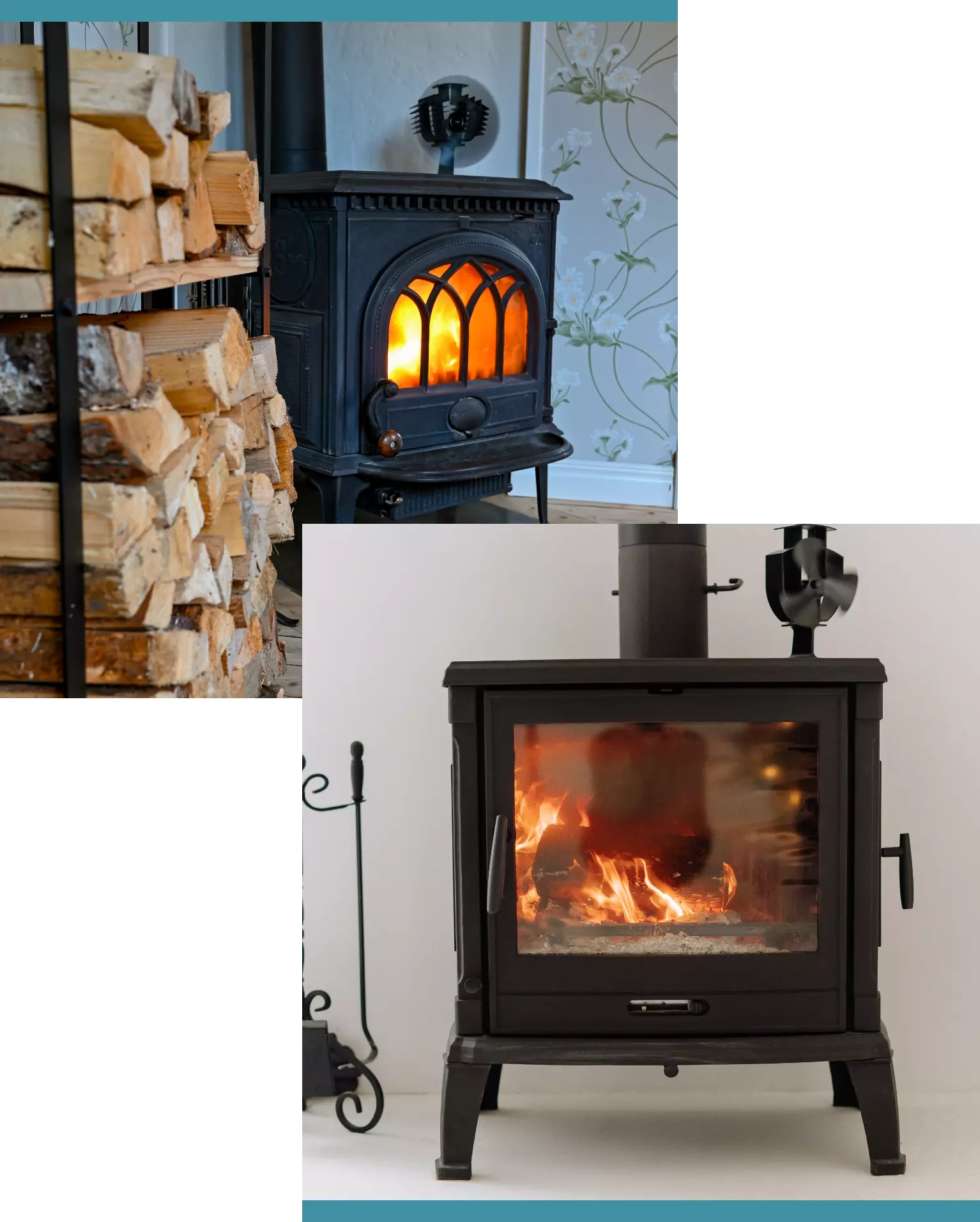
Die richtige Positionierung des Kaminventilators oder Ofenventilators ist entscheidend für eine optimale Wärmeverteilung im Raum. Platzieren Sie den Ventilator auf dem Ofen oder Kamin so nah wie möglich an der heißen Oberfläche, jedoch nicht direkt darauf. Idealerweise sollte der Ventilator auf der Oberseite oder an der Seite des Ofens positioniert werden, um die aufsteigende warme Luft anzusaugen und zu verteilen.
Achten Sie darauf, dass der Ventilator nicht zu nahe an Hindernissen steht, die den Luftstrom blockieren könnten.
Eine freie Luftzirkulation ist entscheidend für die effiziente Wärmeverteilung. Experimentieren Sie mit verschiedenen Positionen, um diejenige zu finden, die die beste Luftzirkulation und Wärmeverteilung gewährleistet. So nutzen Sie den Kaminlüfter oder Ofenventilator optimal, um die Wärme gleichmäßig im Raum zu verteilen und von den Vorteilen einer verbesserten Heizleistung zu profitieren.
Für jeden Ofen nutzbar?
Ein Kaminventilator oder Ofenventilator kann eine effiziente Möglichkeit sein, die Wärme von Ihrem Ofen oder Kamin zu verteilen, vorausgesetzt, Ihr Ofen erzeugt ausreichend Hitze. Diese Ventilatoren sind besonders effektiv auf Kaminen, Kachelöfen und anderen Heizgeräten, die genug Wärme produzieren.
Sie funktionieren ohne Strom und nutzen die aufsteigende warme Luft, um die Luft im Raum zu zirkulieren und die Wärme gleichmäßig zu verteilen. Allerdings sind Kaminventilatoren nicht für alle Öfen geeignet.
Sie funktionieren nicht auf Specksteinöfen, Einbauöfen und massiv gemauerten Kaminsimsen, da diese Oberflächen die für den Betrieb erforderliche Wärme nicht effektiv übertragen können. Es ist wichtig zu prüfen, ob Ihr Ofen die richtigen Bedingungen erfüllt, damit der Ventilator seine Wirkung entfalten kann und Ihnen eine effiziente Wärmeverteilung ermöglicht.

Zusammenfassung
Mit verschiedenen Modellen erhältlich, unterstützt er die gleichmäßige Verteilung der erzeugten Wärme. Wer auf der Suche nach einer energiesparenden und umweltfreundlichen Option ist, sollte einen Kaminventilator in Betracht ziehen. Die Anschaffung eines solchen Luftverteilers für den Kaminofen ist einfach und bietet eine effektive Möglichkeit, die Wärme optimal zu nutzen und so für ein behagliches Raumklima zu sorgen.


